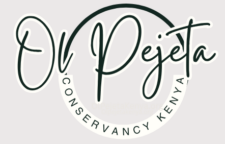Ol Pejeta Conservancy in Kenya is more than just a safari destination—it’s a globally recognized stronghold for endangered species and the last hope for northern white rhinos. Set against the breathtaking backdrop of Mount Kenya, this private conservancy is a beacon of hope for rhino conservation and a real-time laboratory for innovative wildlife protection strategies.
In this guide, we explore how Ol Pejeta is fighting to save the white rhino, the challenges involved, the science behind it all, and how you can be part of this historic mission.
🌍 Where Is Ol Pejeta Conservancy?
Ol Pejeta Conservancy lies in Laikipia County, about 200 kilometers north of Nairobi, Kenya. It covers over 90,000 acres of savannah and woodland, providing a safe haven for over 130 black rhinos, southern white rhinos, and the world’s last two northern white rhinos.
🦏 Why White Rhinos Need Protection
There are two subspecies of white rhinos:
- Southern white rhinos, which have made a comeback from near extinction and number over 15,000 today.
- Northern white rhinos, which are functionally extinct. Only two females—Najin and Fatu—remain, both living under 24/7 armed guard at Ol Pejeta.
The primary threat? Poaching, driven by illegal demand for rhino horn, along with habitat loss and low genetic diversity.
🧬 The Science Saving the Northern White Rhino
With no surviving males, traditional breeding is no longer an option. But Ol Pejeta, in collaboration with global scientists, has embraced cutting-edge biotechnology.
Here’s what’s happening:
1. Egg Harvesting
Eggs are collected from the two surviving females through a delicate and non-invasive process.
2. In Vitro Fertilization (IVF)
Using preserved semen from deceased males, the eggs are fertilized in labs in Europe.
3. Surrogacy Using Southern White Rhinos
The embryos are implanted into southern white rhino surrogates in the hope of producing northern white rhino calves.
4. Genetic Rescue
Scientists are also exploring stem cell technology and genome editing to broaden the gene pool and improve chances of successful births.
This approach is the most advanced wildlife IVF program in the world, offering a model for future species recovery efforts.
🛡️ How Ol Pejeta Protects Its Rhinos
To safeguard its rhinos, Ol Pejeta has created one of the most secure wildlife zones in Africa:
- 24/7 Armed Security Units
- K9 Dog Patrol Teams
- High-tech Surveillance Drones
- Fencing and Controlled Entry Points
- Community Engagement Programs
These security measures are complemented by intensive monitoring, veterinary care, and ecological research.
🐾 The Role of Southern White Rhinos
Ol Pejeta is home to over 30 southern white rhinos, many of which were relocated from South Africa and other parks. These animals:
- Help maintain rhino populations
- Provide surrogates for IVF programs
- Serve as an educational and tourism draw
Southern white rhinos are easier to manage and more social, making them ideal candidates for both reproduction and public engagement.
🤝 Community Involvement in Conservation
Conservation doesn’t work without local support. Ol Pejeta:
- Employs hundreds of locals
- Funds schools, health clinics, and water projects
- Offers conservation education programs
- Encourages community-led tourism initiatives
This approach builds trust, provides livelihoods, and reduces the incentive to support poaching.
🧭 Visiting Ol Pejeta: A Conservation Safari
Visitors to Ol Pejeta get more than just a wildlife experience—they witness living conservation in action.
Highlights include:
- Meeting Najin and Fatu, the last two northern white rhinos
- Touring the Endangered Species Enclosure
- Exploring the Chimpanzee Sanctuary (Kenya’s only one)
- Guided bush walks and game drives
- Staying in eco-lodges or tented camps
Every dollar spent helps fund rhino protection, scientific research, and community welfare.
💡 How You Can Support White Rhino Conservation
Even if you can’t visit Ol Pejeta, there are still ways to help:
- Donate to the Northern White Rhino recovery project
- Adopt a Rhino symbolically through Ol Pejeta’s website
- Raise awareness on social media
- Volunteer or intern through reputable wildlife programs
- Travel responsibly and support eco-friendly operators
🧠 Quick Facts: White Rhino Conservation at Ol Pejeta
| Feature | Details |
|---|---|
| Location | Laikipia County, Kenya |
| Size | 90,000+ acres |
| Northern White Rhinos | 2 females left (Najin & Fatu) |
| Southern White Rhinos | 30+ individuals |
| Main Threats | Poaching, habitat loss, low reproduction rate |
| Key Partners | BioRescue, Safari Park Dvůr Králové, IZW |
| Protection Measures | Armed guards, drones, K9 units, surveillance |
| Reproductive Tech Used | IVF, cryopreservation, surrogacy |
✨ Why Ol Pejeta Matters
Ol Pejeta Conservancy is more than a sanctuary—it’s the epicenter of a global conservation miracle. From high-tech reproductive science to hands-on community engagement, its work with white rhinos could define the future of wildlife conservation worldwide.
Saving the white rhino is no longer just a dream—it’s happening now, and the world is watching.
📣 Ready to Get Involved?
Support the fight to save the white rhino by planning a visit, making a donation, or spreading the word. Every voice matters. Every action counts.
